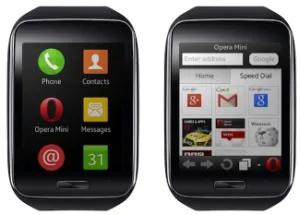When we talk about wearables we think about all kinds of devices and foremost of all, the cool things we will be able to do once the gadgets are cheap enough to reach the masses. If you work in the CE field, you may also think about what this new market could mean for you.
Some of the trends are more exciting than others but nevertheless, new devices are being announced on a regular basis and it would be safe to predict that new ones will follow on an equally regular basis. So how are these devices differentiating themselves from their competition? So far we have seen some trying to add better displays, some adding features and some working the design angle. No matter what, newcomers have to add something beyond what is currently available unless they want to play the low price game from the start. Here are some of the latest additions to the features that make wearables useful. The Samsung Gear is certainly not new in the market, but it allows people to develop uses that are not included by Samsung. One of the more bizarre uses is the ability to boot Windows 95 on the tiny screen. The Inquirer reports that Corbin Davenport posted a video showing this achievement http://tinyurl.com/pqfj4q7.
Besides being pretty useless, it seems to show that the enthusiasts see wearables more as a form of extreme miniaturization of a desktop, rather than a new form of consumer electronics. As can be seen in the video, working a real operating system on the smartwatch is near to impossible even with a stylus. Opera Software has announced that its Opera mini browser will be the first internet browser available for download on the Samsung Gear S. Opera added a feature called Smart Page that makes using the device easier by showing all the social media updates and the news on one screen. I may have a few questions about the usability of such an app on a smartwatch, but then at my age I may not be the target customer for this kind of use. The question is, who is?
The Google Glass device together with other smartglasses, seem to be able to help people with certain forms of vision problems by providing bright indicators or by boosting brightness at night, for example. Now Georgia Tech has had the idea of using the Google Glass for people with hearing loss. They use a smartphone as the listening device that shows the spoken words as a caption on Google Glass. This may not be less obvious than wearing a hearing aid, but it would still work for people who can’t wear an aid. A video can be seen here http://tinyurl.com/mxt549l.
This shows that a lot of people are looking at using wearable devices beyond what the CE manufacturers are envisioning. We may find the good with the bad, but we may also find the killer app that will make any of the wearable form factors the future star of the CE world. – Norbert Hildebrand

